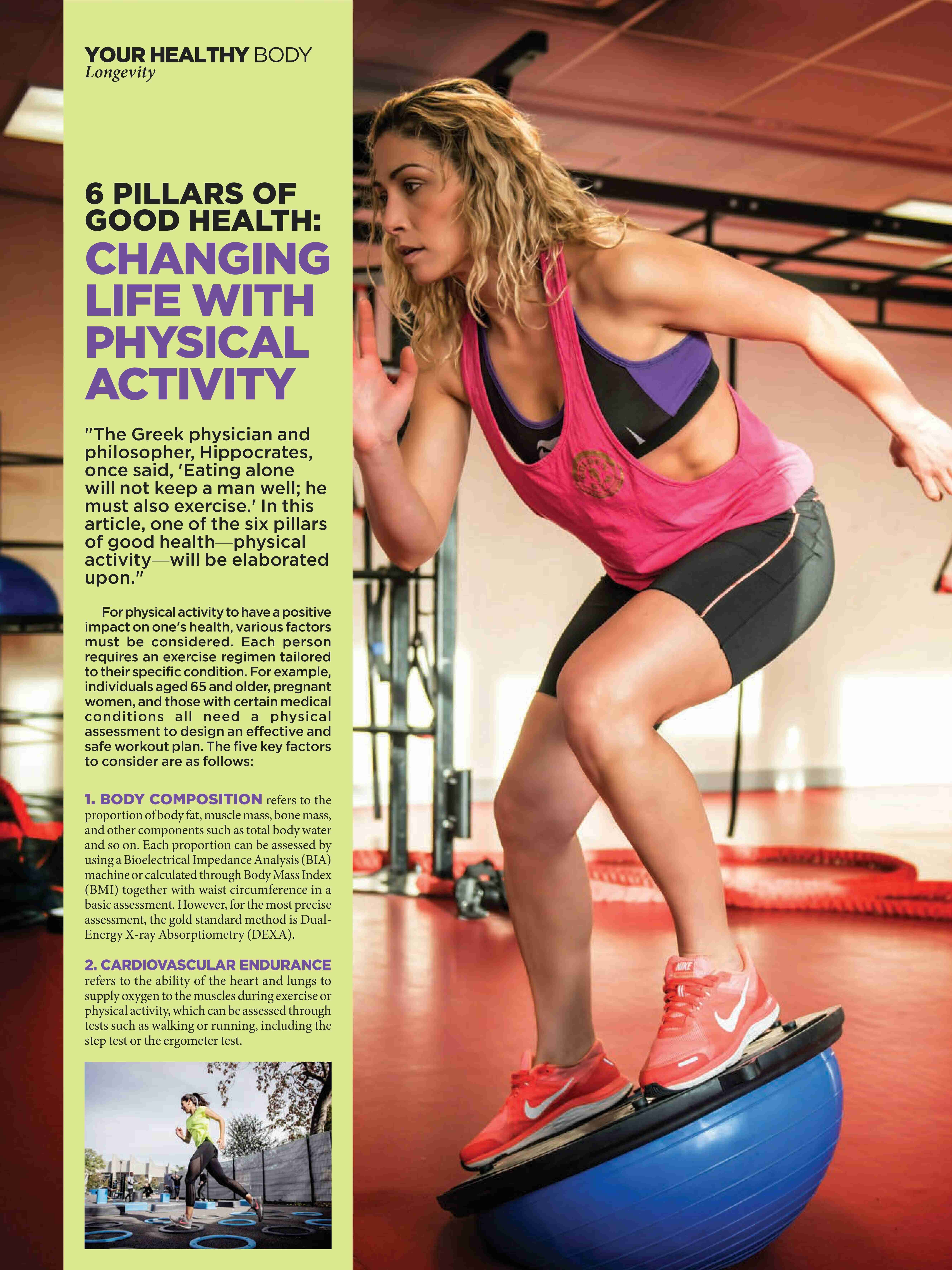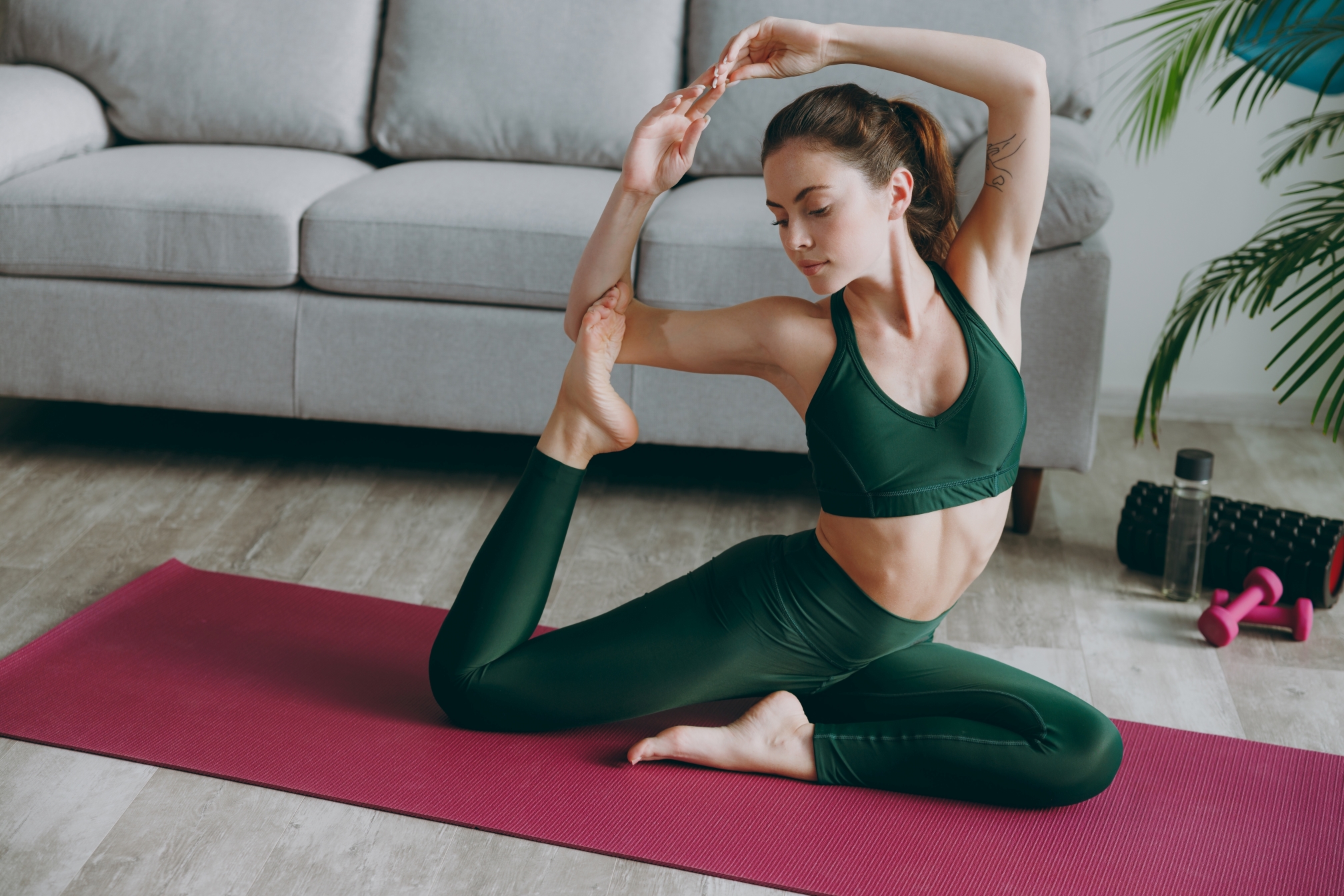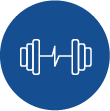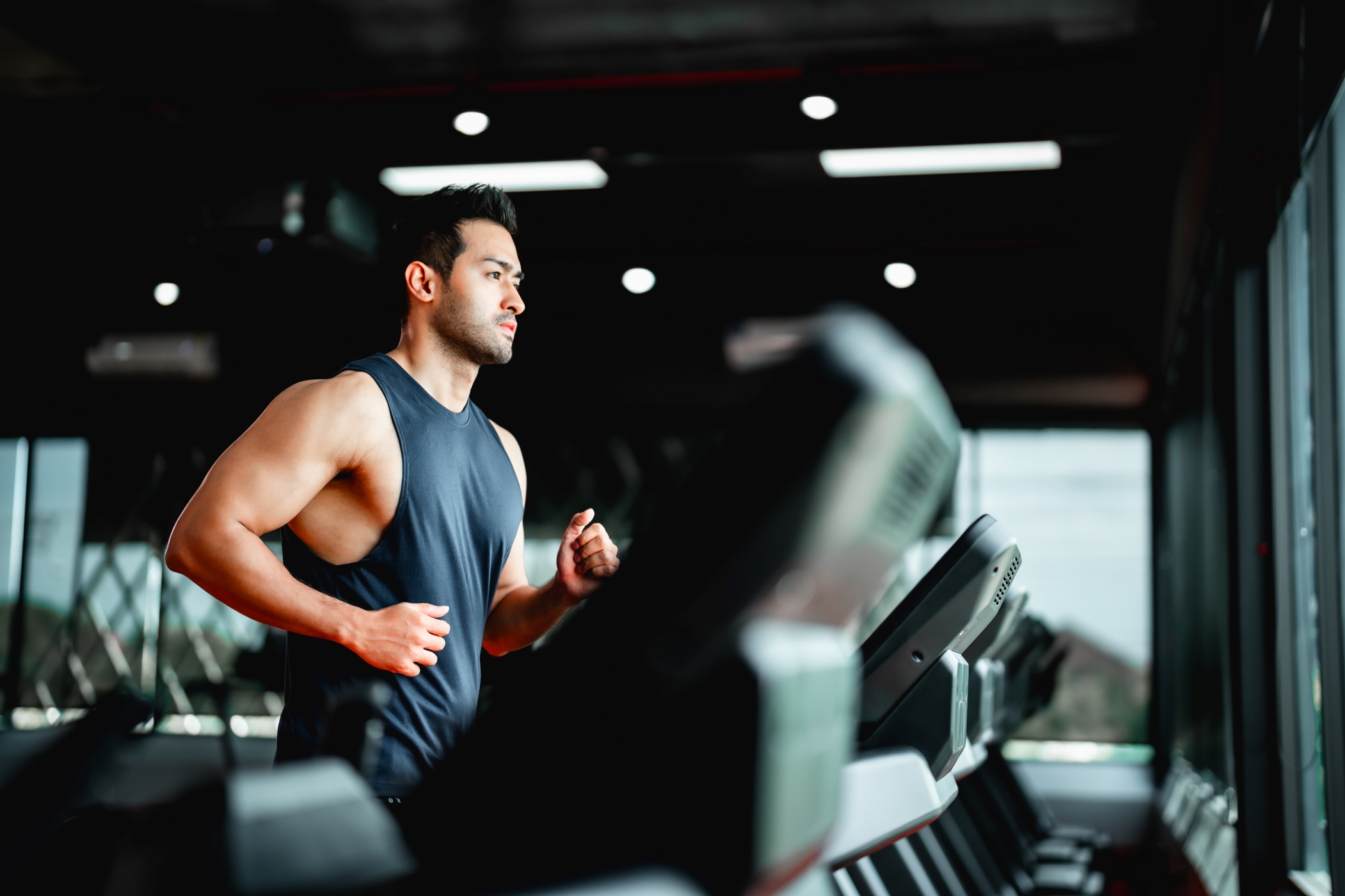6 Pillars of Good Health: Changing Life with Physical Activity
"The Greek physician and philosopher, Hippocrates, once said, 'Eating alone will not keep a man well; he must also exercise.' In this article, one of the six pillars of good health—physical activity—will be elaborated upon."
For physical activity to have a positive impact on one's health, various factors must be considered. Each person requires an exercise regimen tailored to their specific condition. For example, individuals aged 65 and older, pregnant women, and those with certain medical conditions all need a physical assessment to design an effective and safe workout plan. The five key factors to consider are as follows:

- Body composition refers to the proportion of body fat, muscle mass, bone mass, and other components such as total body water and so on. Each proportion can be assessed by using a Bioelectrical Impedance Analysis (BIA) machine or calculated through Body Mass Index (BMI) together with waist circumference in a basic assessment. However, for the most precise assessment, the gold standard method is Dual-Energy X-ray Absorptiometry (DEXA).
- Cardiovascular endurance refers to the ability of the heart and lungs to supply oxygen to the muscles during exercise or physical activity, which can be assessed through tests such as walking or running, including the step test or the ergometer test.
- Muscular strength and endurance are classified into two categories:
- Muscular Strength is the maximum amount of weight a muscle can lift in a single effort. It can be assessed by determining the maximum weight an individual is able to lift.
- Muscular Endurance is the capability of one’s muscles to continuously perform an activity over a period of time. It is measured by the number of times one can continuously carry out an activity."
( The assessment of muscular endurance and strength can be done through various activities, such as evaluating upper body strength with the bench press, lower body strength with Smith machine squats, and muscular endurance through curl-ups and push-ups. )
- Flexibility refers to the maximum range of motion of one’s joints in both bending and stretching. The assessment involves a sit-and-reach test, where the individual bends forward and stretches their hands along a ruler as far as possible. This assessment determines if the distance and range of motion of the joints are limited.
- Balance refers to the ability to maintain a symmetrical position and stability in certain postures. The assessment includes both static balance tests, such as the single leg balance test, and dynamic balance tests, such as the Y balance test.
Planning Exercises with ‘FITT-P’
Physical exercises with the FITT-Principle examine five different aspects in order to yield the most effective exercising. These 5 aspects include Frequency, Intensity, Time, Type, and Progression.
- Cardiovascular Exercise
The recommended amount of general cardiovascular exercise is 150-300 minutes per week of moderate-intensity cardiovascular exercise or 75-150 minutes per week of vigorous-intensity exercise. The intensity can be assessed by monitoring the heart rate per minute.
As long as the total exercise time adds up to the recommended amount, each session can be broken down into smaller 5-minute intervals or performed in consecutive 60-minute sessions, depending on each person’s physical limitations.
Cardiovascular exercise can be divided into two types: impact exercises, such as running, and non-impact exercises, such as cycling and swimming. It is recommended to alternate between both types.
Once better physical strength is achieved, frequency, time, and intensity of exercise can be adjusted with a thorough physical reassessment. An example of a good exercise plan is to leave out a High Intensity Interval Training (HIIT) until one is able to sustain moderate-intensity exercise for over 20 consecutive minutes.
- Flexibility Exercise

It is generally recommended to practice flexibility exercises 2-7 days per week, focusing on particularly tense muscles. Stretching should be done within a range of mild to moderate tension, depending on each person’s tolerance. Avoid stretching to the point of pain, as this can lead to muscle injury.
Static stretching is commonly used after exercise to stretch muscles. Each stretch should be held for 20 seconds to over a minute. This type of stretching helps reduce muscle tightness, and its effectiveness depends on the technique use, the duration of the stretch, and the rest periods in between.
Dynamic stretching is stretching while active movement. It is typically used as a warm-up before exercise to prepare muscles for physical activity. Dynamic stretching increases blood circulation and oxygen supply to the muscles, helping to prevent injury.
Ballistic stretching involves rhythmic muscle stretching, alternating between stretching and relaxing in a steady rhythm. It is suitable as a warm-up before engaging in fast-paced sports. However, it should be practiced at a moderate speed to prevent injury.
Proprioceptive Neuromuscular Facilitation (PNF) is a complex technique that coordinates the muscular and nervous systems. PNF is typically practiced by athletes or used in physical therapy for individuals with severe muscle tightness.
Flexibility is vital for efficient movement. Stretching helps prevent injuries from both sports and exercise. However, overstretching can cause injury. Therefore, stretching to the appropriate level is crucial.
- Strength Exercise
This exercise differs from both cardio and flexibility exercises. It focuses on muscle strength training, which is more complex, involving factors such as frequency, the number of sets per muscle group, the number of repetitions per set, the intensity in terms of weight lifted and perceived effort, the selection of exercises, the order of exercises, rest intervals between sets, exercise duration, and even the tempo of each repetition.
Beginners to strength training need to learn the correct posture for each movement, the connection between their muscles and mind, basic load assessment, and the range of motion, all of which should be discussed with a specialist at the beginning.
Thus, all physical activities are dose-response: the more you do, the more you benefit. However, a thorough physical assessment and planning are key to ensuring effective exercises. The best approach is to seek specialized consultation from exercise experts, medical specialists, physical therapists, or personal trainers, depending on each person’s situation. Just remember, “Doing any physical activity is better than doing none”.





